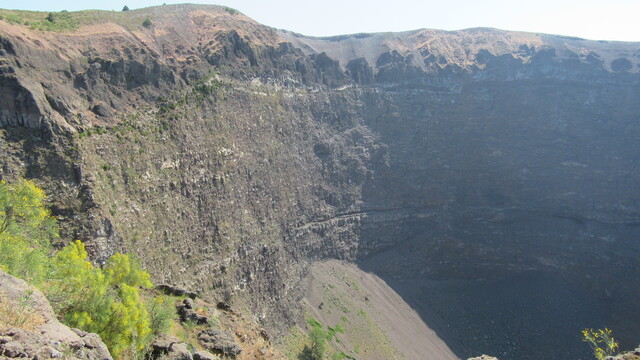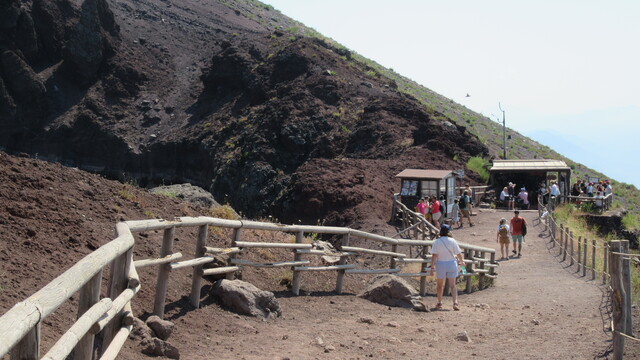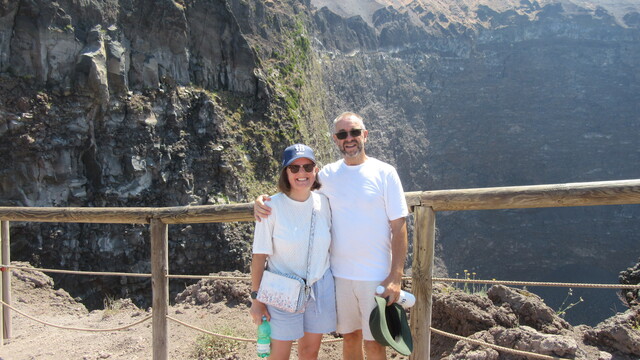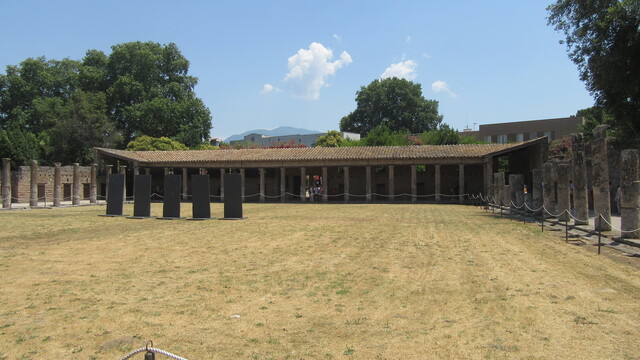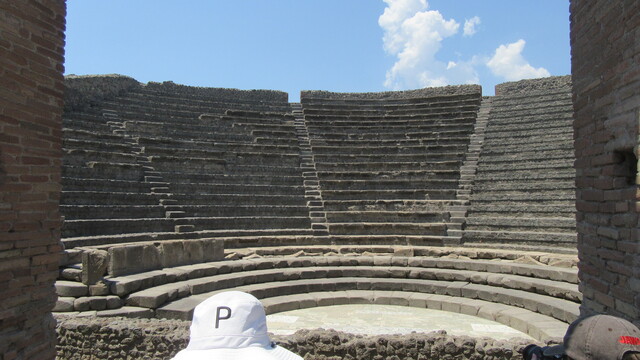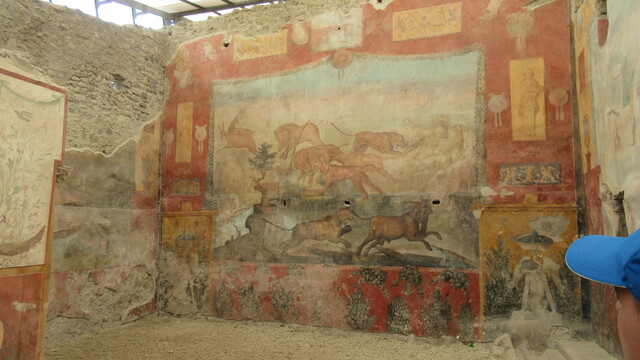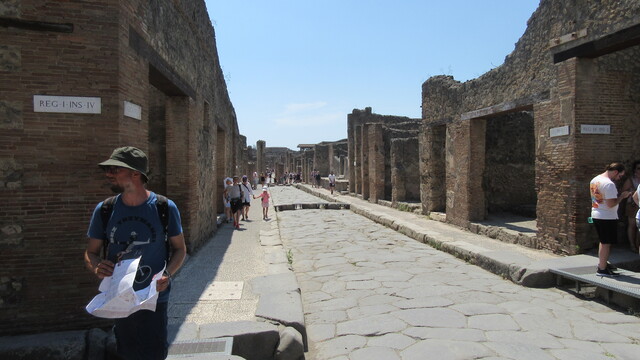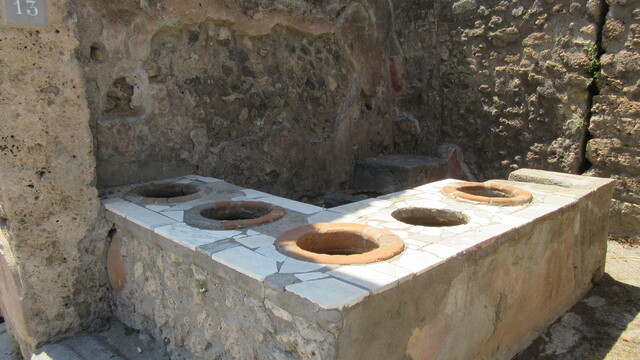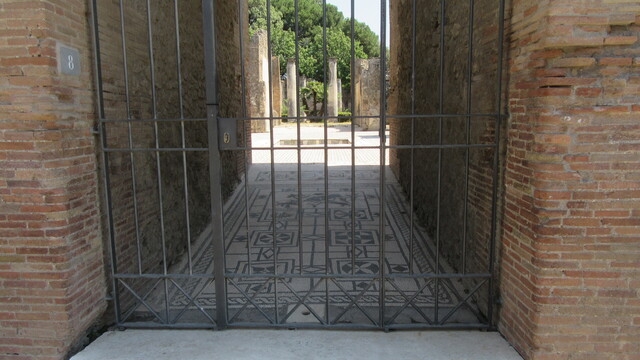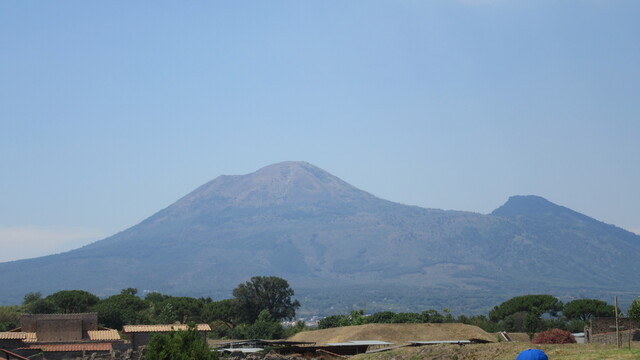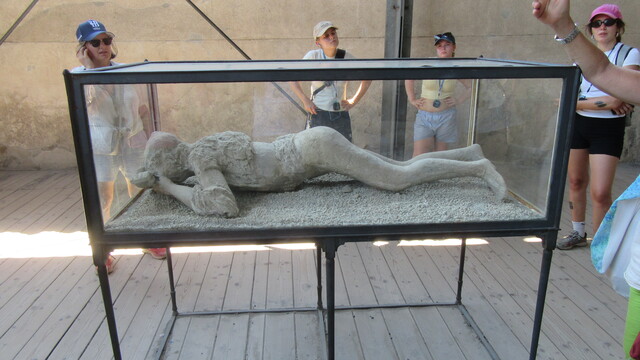The second full day of our holiday in Naples was a prebooked excursion to Mount Vesuvius and the town of Pompeii.
Armed with the camera and water bottles, we walked from the hotel to the meeting point near the railway station. Much easier than walking up the hill.
We arrived with plenty of time to spare, and there were many people already waiting for their respective mini-buses; clearly this was a common departure point for various tours.
A few minutes after the specified time, a group of guides arrived bearing the name of our tour operator. We were allocated a guide and ushered to the waiting vehicle. The air-conditioned interior was very welcome - even at 9:20.
The day's event was to begin with a visit to the summit of Vesuvius, and the journey there was quite uneventful. Rather like the road to Serra da Estrella.
Margharita, our guide, was knowledgeable and she passed on lots of information regarding the area and the mountain.
We drove to a car park and souvenir centre about 200m below the summit, then we had to walk from there.
The walk was not too difficult on the well worn path.
The view back down to Naples and the surrounding area shows how close it is.
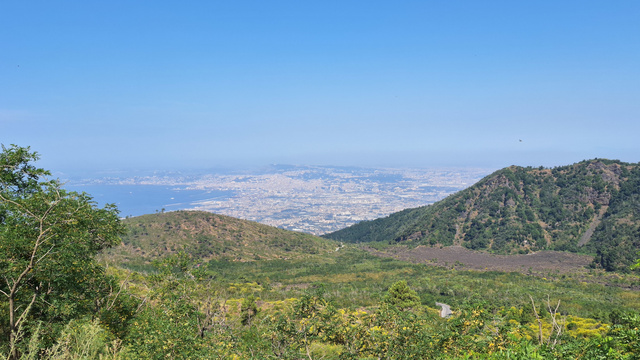
The best view of the current crater, not a great image because it was towards the sun.
Some lava formation on the pathway, perhaps from the recent 1944 eruption.
At the limit of the path, yet another souvenir shop 😅
On the way back down, we helped a family take pictures in front of the main crater so that everyone could be included.
They kindly did the same for us.
It was a humbling experience to imagine the scale of the destruction when the whole mountain top erupts into the atmosphere and then spills back down towards the sea, obliterating everything in its path. All the TV programmes we watched in the past could not convey the size of it all.
It was a fairly brief visit to the mountain, and we didn't have time to walk the full path around the summit, but we had to return to the bus for the next stage of the day. A 'surprise' visit to 'The Lemon Man'.
On the way back down, we stopped at the small shop of Maurizio Russo, who makes, among many other things, a traditional limoncello liquor. The shop has a huge array of lemon associated products. Super sweet candied lemon peel, various chocolates, and biscuits. The star of the show is the massive lemons that he can grow on his land. We didn't get a picture, but the one on display was easily 20cm (8") long and almost as wide, and we thought some of our lemons were monsters.
We duly bought a couple of items, a traditional liquor for me and an alcohol free version for Janet !!
With the show over, we moved on to the next part of the day, a pizza lunch at a restaurant a little further down the hill. The place was heaving with other tour parties, and given the isolated location, this must be the major part of the business. There were two choices of Pizza and a soft drink included in the package, and it did not disappoint. A whole large pizza.
With hunger sated and a welcome rest, we begin the next part of the tour, Pompeii.
After being collected into a larger group, kitted out with a radio receiver, and allocated to a guide, we entered the site. Our guide, carrying a red umbrella for shade and talking most of the way round, was very informative. Although the tour was restricted to the places where the guide took us, we probably saw some of the most interesting parts. The whole site is enormous, 44 hectares (109 acres) and not easy to see even in a whole day.
The first sight is a fight training field to teach prisoners how to fight and die in the games, for Roman sport.
A small amphitheatre where performances would take place, though not fights.
Inside the home of a prominent citizen, all the walls were similarly decorated with frescoes.
One of the main streets with an extremely well preserved roadway. You can see the crossing point, rather like a modern zebra crossing, stepping stones with gaps to allow the cart wheels to pass, but high enough to keep the pedestrian out of the water and mess that would undoubtedly be present in the street.
A Roman style fast food outlet, food would be prepared, cooked, and stored in the pots ready to be sold to passers by.
An original mosaic floor in a passageway to someone's property.
Just how close is that volcano?
Approximately 9.5km to the main cone, practically no distance at all in geological terms.
The iconic view of one of the victims who died in 79 A.D., unable to escape the searing gas and ash of the pyroclastic flow engulfing the town.
The 'body' is simply a plaster cast of the void left in the hardened ash. The real flesh had decayed centuries ago, but the bones are still present, encased within the modern plaster.
It is a very interesting place to visit, and there is a great deal more for the archaeologists to uncover, the work continues daily.



